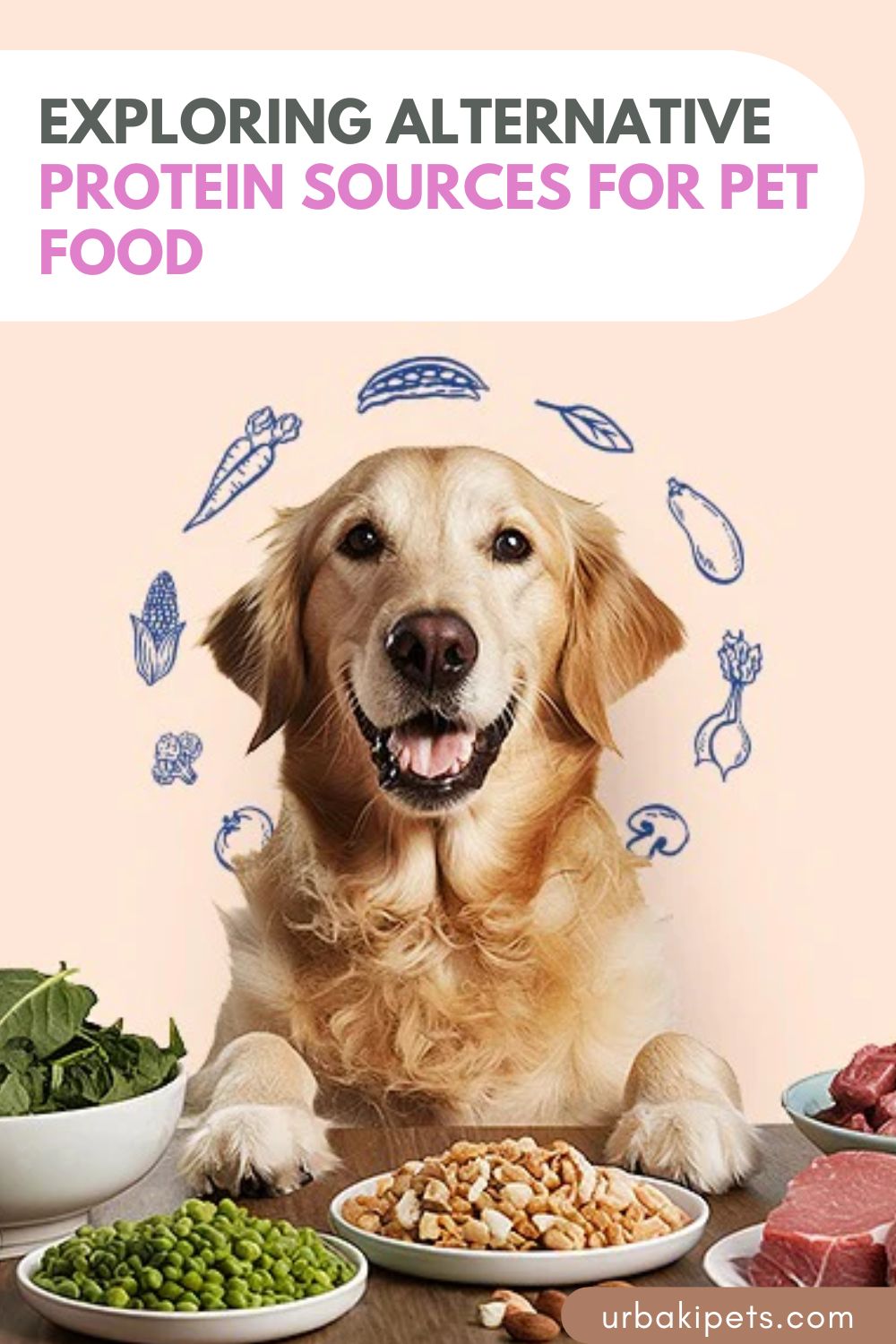Exploring Alternative Protein Sources for Pet Food

When it comes to feeding pets, traditional protein sources such as chicken, beef, and fish have been the go-to for years.
However, as pet owners become more conscious of health, sustainability, and dietary needs, the demand for alternative protein sources is on the rise.
Whether for pets with food sensitivities, allergies, or owners looking to reduce their carbon footprint, exploring alternative protein sources offers many benefits.
This article will explore a variety of alternative proteins and how they can contribute to your pet’s health and well-being.
Why Consider Alternative Protein Sources?
The choice to explore alternative proteins is driven by various factors. Traditional animal-based proteins can be high in fats or difficult to digest for some pets.
Moreover, factory farming practices can contribute to environmental issues such as land degradation, water pollution, and greenhouse gas emissions.
By considering alternative protein sources, pet owners can potentially offer a healthier, more sustainable diet for their pets.
These options are not only nutritious but can be suitable for pets with food sensitivities or allergies to common ingredients like chicken or beef.
 Environmental Benefits
Environmental Benefits
Sustainability is a growing concern for many pet owners. The environmental impact of traditional livestock farming is significant, contributing to greenhouse gas emissions, deforestation, and soil degradation.
Alternative proteins such as insects, plant-based proteins, and lab-grown meats offer more sustainable options with a lower carbon footprint, reduced water usage, and less waste.
Health Benefits for Pets
Many pets suffer from food allergies or digestive issues related to common proteins. Alternatives such as lamb, venison, or plant-based proteins may be gentler on the digestive system and offer better tolerance for pets with food sensitivities.
These alternatives can provide high-quality nutrition while reducing the risk of allergic reactions or gut irritation.
Types of Alternative Protein Sources for Pet Food
There are several alternative protein sources currently gaining traction in the pet food industry. Below are some of the most notable alternatives that offer both nutritional value and sustainability.
 1. Insects: A Protein Powerhouse
1. Insects: A Protein Powerhouse
Insects are an emerging protein source for pet food that is not only nutritious but also highly sustainable. Crickets, mealworms, and black soldier fly larvae are particularly rich in protein, healthy fats, and essential nutrients such as vitamins and minerals.
Insects also have a low carbon footprint and require far less water, land, and feed than traditional livestock.
Benefits of Insects for Pets
Highly digestible: Insect protein is easy for pets to digest, making it ideal for pets with sensitive stomachs.
Rich in omega-3 fatty acids: Insects contain healthy fats that support coat health and joint function.
Sustainable: Insect farming has a minimal environmental impact, requiring fewer resources than livestock.
2. Plant-Based Proteins: A Vegetarian Option
For pet owners interested in reducing their pet’s meat consumption, plant-based proteins provide a viable option. Peas, lentils, chickpeas, and quinoa are some examples of plant-based proteins used in pet food.
These proteins are not only rich in fiber and amino acids but also provide a sustainable and cost-effective alternative to meat.
 Benefits of Plant-Based Proteins for Pets
Benefits of Plant-Based Proteins for Pets
Hypoallergenic: Many plant-based proteins are gentle on pets with food allergies or sensitivities.
Rich in fiber: Plant proteins often contain high levels of fiber, which supports digestive health.
Sustainable: Growing plants for protein requires significantly fewer resources than raising animals.
3. Novel Animal Proteins: Venison, Kangaroo, and Lamb
For pets that require animal-based proteins but cannot tolerate common sources like chicken or beef, novel animal proteins can offer a solution.
Venison, kangaroo, and lamb are examples of animal proteins that are less likely to cause allergic reactions.
These meats are often considered more environmentally friendly than traditional livestock farming, as they are typically sourced from free-range or wild populations.
Benefits of Novel Animal Proteins for Pets
Low allergenic potential: These proteins are less likely to trigger allergic reactions in pets with food sensitivities.
High nutritional value: Venison, kangaroo, and lamb are lean meats that provide essential amino acids and nutrients.
Sustainable: These animals require fewer resources to raise and have a lower environmental impact.
 4. Lab-Grown Meat: The Future of Pet Food?
4. Lab-Grown Meat: The Future of Pet Food?
Lab-grown meat, also known as cultured meat or cellular agriculture, is an innovative development in the pet food industry. This meat is produced by cultivating animal cells in a controlled environment, eliminating the need for traditional animal farming.
While lab-grown meat is still in its early stages, it holds potential for being an ethical, sustainable, and highly nutritious source of protein for pets in the future.
Benefits of Lab-Grown Meat for Pets
Ethical and sustainable: Lab-grown meat requires no animals to be raised or slaughtered, offering a more humane option.
Highly nutritious: Lab-grown meat has the potential to offer the same or even better nutritional content as traditional meat.
Minimal environmental impact: This method uses far fewer resources compared to traditional livestock farming.
How to Incorporate Alternative Proteins into Your Pet’s Diet
Incorporating alternative protein sources into your pet's diet can be a gradual process. Here are some steps to consider when introducing these proteins:
Start Slowly
Transition your pet to a new protein source by mixing it with their current food for a few days. Gradually increase the proportion of the new protein while decreasing the amount of the old one.
This allows your pet’s digestive system to adjust and reduces the risk of upset stomachs.
 Consult a Veterinarian
Consult a Veterinarian
Before making significant changes to your pet’s diet, consult a veterinarian, especially if your pet has existing health conditions or allergies.
A vet can help you determine if the new protein is suitable for your pet and guide you on portion sizes and nutritional balance.
Monitor for Allergic Reactions
When introducing a new protein source, keep an eye on your pet for any signs of allergic reactions such as itchy skin, vomiting, or diarrhea.
If any of these symptoms occur, discontinue the new food and consult a vet.
The Future of Pet Food is Diverse and Sustainable
In conclusion, alternative protein sources are changing the landscape of pet food, offering numerous health benefits and environmental advantages.
Whether it’s insects, plant-based proteins, or novel animal proteins, these alternatives provide pet owners with options that are not only nutritious but also sustainable.
As the pet food industry continues to evolve, exploring these alternatives will help ensure that pets receive the best possible nutrition while supporting a healthier planet.
Did you find this post useful or inspiring? Save THIS PIN to your PETS Board on Pinterest!


 Environmental Benefits
Environmental Benefits 1. Insects: A Protein Powerhouse
1. Insects: A Protein Powerhouse Benefits of Plant-Based Proteins for Pets
Benefits of Plant-Based Proteins for Pets 4. Lab-Grown Meat: The Future of Pet Food?
4. Lab-Grown Meat: The Future of Pet Food? Consult a Veterinarian
Consult a Veterinarian
You may also like